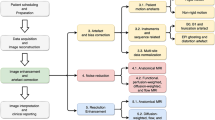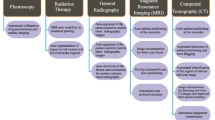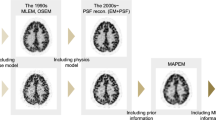Abstract
Positron emission tomography (PET) plays an important role in the diagnosis and surveillance of neoplastic diseases. PET images may show higher noise levels than other imaging modalities, especially in a dose- or time-saving approach. Artificial Intelligence techniques can improve the signal-to-noise ratio in PET image reconstruction. Deep learning approaches have made significant advances in comprehensive data retrieval and de-noising. Artificial Intelligence de-noising in PET is a very promising approach that could allow shorter scan times or lower radiopharmaceutical dose administration. We reviewed studies about the de-noising AI-driven PET images, i.e., by SubtlePET™ AI tool, according to the following items: (1) retrieval of complete PET data acquired with reduced scan time; (2) reconstruction of PET images with low-count statistics by reducing radiopharmaceutical doses; (3) impact of artificial intelligence-based de-noising on PET radiomics. We evaluated their implementability in PET image reconstruction to increase the signal-to-noise ratio and image definition. This approach seems promising to positively impact patient healthcare—especially in pediatric patients—and overall diagnostic procedures reducing the cost of radiopharmaceuticals and increasing productivity and efficiency.
Similar content being viewed by others
References
Shaikh S (2022) PET-CT imaging and applications. In: Gharieb RR (ed) Computed-tomography (CT) scan. IntechOpen. https://doi.org/10.5772/intechopen.103975
Gavriilidis P, Koole M, Annunziata S, Mottaghy FM, Wierts R (2022) Positron range corrections and denoising techniques for gallium-68 PET imaging: a literature review. Diagnostics 12:10. https://doi.org/10.3390/diagnostics12102335
Vriens D, Visser EP, de Geus-Oei L-F, Oyen WJG (2010) Methodological considerations in quantification of oncological FDG PET studies. Eur J Nucl Med Mol Imaging 37(7):1408–1425. https://doi.org/10.1007/s00259-009-1306-7
Arnold B, Scheibe P (1984) Noise analysis of a digital radiography system. Am J Roentgenol 142(3):609–613. https://doi.org/10.2214/ajr.142.3.609
Chang T, Chang G, Kohlmyer S, Clark JW, Rohren E, Mawlawi OR (2011) Effects of injected dose, BMI and scanner type on NECR and image noise in PET imaging. Phys Med Biol 56(16):5275–5285. https://doi.org/10.1088/0031-9155/56/16/013
Yang X, Peng H (2015) The use of noise equivalent count rate and the NEMA phantom for PET image quality evaluation. Phys Med 31(2):179–184. https://doi.org/10.1016/j.ejmp.2015.01.003
Weyts K et al (2022) Artificial intelligence-based PET denoising could allow a two-fold reduction in [18F]FDG PET acquisition time in digital PET/CT. Eur J Nucl Med Mol Imaging 49(11):3750–3760. https://doi.org/10.1007/s00259-022-05800-1
Schaefferkoetter J et al (2020) Convolutional neural networks for improving image quality with noisy PET data. EJNMMI Res 10(1):105. https://doi.org/10.1186/s13550-020-00695-1
Jaudet C, Weyts K, Lechervy A, Batalla A, Bardet S, Corroyer-Dulmont A (2021) The impact of artificial intelligence CNN based denoising on FDG PET radiomics. Front Oncol 11:692973. https://doi.org/10.3389/fonc.2021.692973
Katsari K et al (2021) Artificial intelligence for reduced dose 18F-FDG PET examinations: a real-world deployment through a standardized framework and business case assessment. EJNMMI Phys 8(1):25. https://doi.org/10.1186/s40658-021-00374-7
Bonardel G et al (2022) Clinical and phantom validation of a deep learning based denoising algorithm for F-18-FDG PET images from lower detection counting in comparison with the standard acquisition. EJNMMI Phys 9(1):36. https://doi.org/10.1186/s40658-022-00465-z
Gianoli C et al (2014) PET-CT scanner characterization for PET raw data use in biomedical research. Comput Med Imaging Graph 38(5):358–368. https://doi.org/10.1016/j.compmedimag.2014.03.008
Kim HS, Cho S-G, Kim JH, Kwon SY, Lee B-I, Bom H-S (2014) Effect of post-reconstruction Gaussian filtering on image quality and myocardial blood flow measurement with N-13 ammonia PET. Asia Ocean J Nucl Med Biol 2(2):104–110
Gong K, Kim K, Cui J, Wu D, Li Q (2021) The Evolution of Image Reconstruction in PET. PET Clinics 16(4):533–542. https://doi.org/10.1016/j.cpet.2021.06.004
Iriarte A, Marabini R, Matej S, Sorzano COS, Lewitt RM (2016) System models for PET statistical iterative reconstruction: a review. Comput Med Imaging Graph 48:30–48. https://doi.org/10.1016/j.compmedimag.2015.12.003
Kaalep A et al (2018) Feasibility of state of the art PET/CT systems performance harmonisation. Eur J Nucl Med Mol Imaging 45(8):1344–1361. https://doi.org/10.1007/s00259-018-3977-4
Nensa F, Demircioglu A, Rischpler C (2019) Artificial Intelligence in nuclear medicine. J Nucl Med 60(Supplement 2):29S-37S. https://doi.org/10.2967/jnumed.118.220590
Doi K (2007) Computer-aided diagnosis in medical imaging: historical review, current status and future potential. Comput Med Imaging Graph 31(4):198–211. https://doi.org/10.1016/j.compmedimag.2007.02.002
Fujita H (2020) AI-based computer-aided diagnosis (AI-CAD): the latest review to read first. Radiol Phys Technol 13(1):6–19. https://doi.org/10.1007/s12194-019-00552-4
Mohammed M, Khan MB, Bashier EBM (2016) Machine learning: algorithms and applications. CRC Press
Gottesman O et al (2019) Guidelines for reinforcement learning in healthcare. Nat Med 25(1):16–18. https://doi.org/10.1038/s41591-018-0310-5
SubtlePET—AI software for improving your PET Scanners», Subtle Medical. Consultato: 14 giugno 2023. [Online]. Disponibile su: https://subtlemedical.com/subtlepet/
Chen KT et al (2019) Ultra–low-dose 18F-florbetaben amyloid pet imaging using deep learning with multi-contrast MRI inputs. Radiology 290(3):649–656. https://doi.org/10.1148/radiol.2018180940
Su R, Zhang D, Liu J, Cheng C (2021) MSU-Net: multi-scale U-Net for 2D medical image segmentation. Front Genet 12:639930. https://doi.org/10.3389/fgene.2021.639930
Ziabari A, Hye Ye D, Srivastava S, Sauer KD, Thibault J-B, Bouman CA (2018) 2.5D deep learning for CT image reconstruction using a multi-GPU implementation.. Disponibile su: https://engineering.purdue.edu/~bouman/publications/orig-pdf/2018-Asilomar.pdf
Chaudhari AS et al (2021) Low-count whole-body PET with deep learning in a multicenter and externally validated study. npj Digit Med 4(1):127. https://doi.org/10.1038/s41746-021-00497-2
Xing Y et al (2022) Deep learning-assisted PET imaging achieves fast scan/low-dose examination. EJNMMI Phys 9(1):7. https://doi.org/10.1186/s40658-022-00431-9
C. M. Systems, PET with Advanced Intelligent Clear IQ-Engine | Nuclear Medicine | Canon Medical Systems. Consultato: 21 novembre 2023. [Online]. Disponibile su: https://global.medical.canon/products/nuclear_medicine/PET-with-Advanced
Yamagiwa K et al (2022) Enhancement of 18F-fluorodeoxyglucose PET image quality by deep-learning-based image reconstruction using advanced intelligent clear-IQ Engine in semiconductor-based PET/CT scanners. Diagnostics 12(10):10. https://doi.org/10.3390/diagnostics12102500
Aide N, Lasnon C, Veit-Haibach P, Sera T, Sattler B, Boellaard R (2017) EANM/EARL harmonization strategies in PET quantification: from daily practice to multicentre oncological studies. Eur J Nucl Med Mol Imaging 44(S1):17–31. https://doi.org/10.1007/s00259-017-3740-2
Funding
The authors report no involvement in the research by the sponsor that could have influenced the outcome of this work.
Author information
Authors and Affiliations
Contributions
Marco De Summa and Maria Rosaria Ruggiero have given substantial contributions to the conception or the design of the manuscript and contributed equally. Sandro Spinosa, Giulio Iachetti, Susanna Esposito gave their contribution to acquisition, analysis and interpretation of the data. All authors have participated to drafting the manuscript. Daniele Antonio Pizzuto revised it critically. All authors read and approved the final version of the manuscript.
Corresponding author
Ethics declarations
Conflict of interest
The authors certify that there is no conflict of interest with any financial organization regarding the material discussed in the manuscript.
Additional information
Publisher's Note
Springer Nature remains neutral with regard to jurisdictional claims in published maps and institutional affiliations.
Rights and permissions
Springer Nature or its licensor (e.g. a society or other partner) holds exclusive rights to this article under a publishing agreement with the author(s) or other rightsholder(s); author self-archiving of the accepted manuscript version of this article is solely governed by the terms of such publishing agreement and applicable law.
About this article
Cite this article
De Summa, M., Ruggiero, M.R., Spinosa, S. et al. Denoising approaches by SubtlePET™ artificial intelligence in positron emission tomography (PET) for clinical routine application. Clin Transl Imaging (2024). https://doi.org/10.1007/s40336-024-00625-4
Received:
Accepted:
Published:
DOI: https://doi.org/10.1007/s40336-024-00625-4









